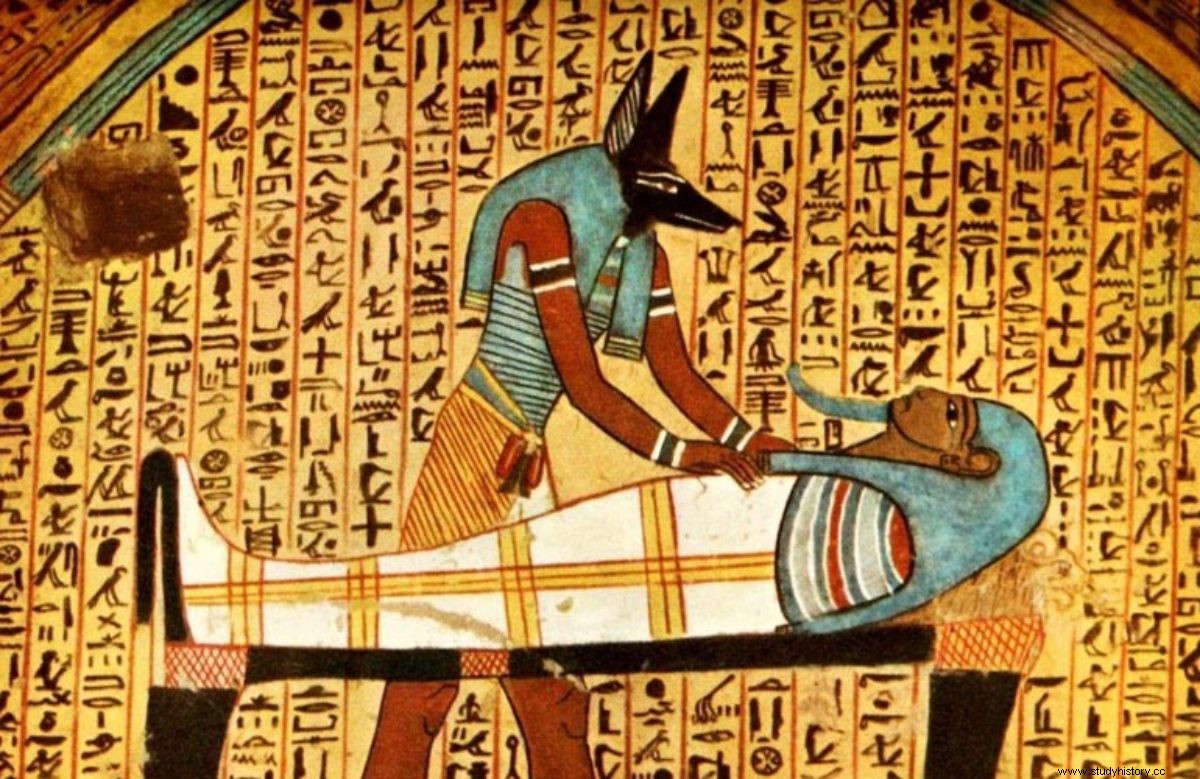Every time we reminisce about Egypt, the golden sands and pyramids are the foremost still images we think of. Let's take a deep dive into some history, religion and politics. Shall we?
The north-eastern corner of Africa presents this diverse country, Egypt. One of the great ancient civilizations of the ancient Middle East lay in the heart of Egypt, as we all know, the Nile Valley and the Delta. For example, Mesopotamia, located in the Far East, was one of the first literary and urban societies. The pharaohs of Egypt thrived for almost three thousand years with periods of small dynasties that were native and scattered with short phases of foreign rulers.
During my research I learned that Egypt was in fact an integral part of the Hellenistic age as Alexander the Great had conquered that part in 323 BCE, which was later conquered by the Romans in 30 BCE. The city of Alexandria developed during the Greek Ptolemaic dynasty as a large literary community. But what the Romans conquered is what the new Egypt is. It remained part of the Roman Republic and empire and later its successor state, the Byzantine Empire, until it was again defeated by the Arab Muslim armies in 639-642 AD
Since the conquest of the Muslim armies, the great success that symbolized Egyptian culture began to adopt the Arab culture as the Egyptian language, replaced by an Arabic dialect as the most common language. Until the conquest, despite the incompatible ethnicity of the subsequent groups of leaders, the lives of the masses in the rural and urban parts of the region did not change much as their language and culture remained the same. Today, Egypt is widely known for its connection to the wider Islamic world and Arab culture, although it has been ruled by other foreign elites such as Turkish, Circassian and Kurdish.
In this blog post I will write about not only the history but also the myths, legends and modern Egypt. In my opinion, knowing or visiting a country is like visiting a fictional world for the very first time. You have to read it, over and over again, to discover the different layers it shows each time, and then compare it to other worlds and discuss it with peers until you know more. Just so you need to know a little about the country you are visiting to match the peculiar secrets and teams you have read before, or it has been hidden up your sleeve.
The History of Ancient Egypt
Egypt has created its own lively field of study for historians and archaeologists called Egyptology. The most important sources of information about ancient Egypt are artefacts, artefacts found in archeological sites and monuments. All of them are covered by hieroglyphs that have only been deciphered recently. Very few are like the rich religious conventions, architecture and culture that have emerged from ancient Egypt consisting of almost thirty centuries, from 3100 BC. to 323 BC
-
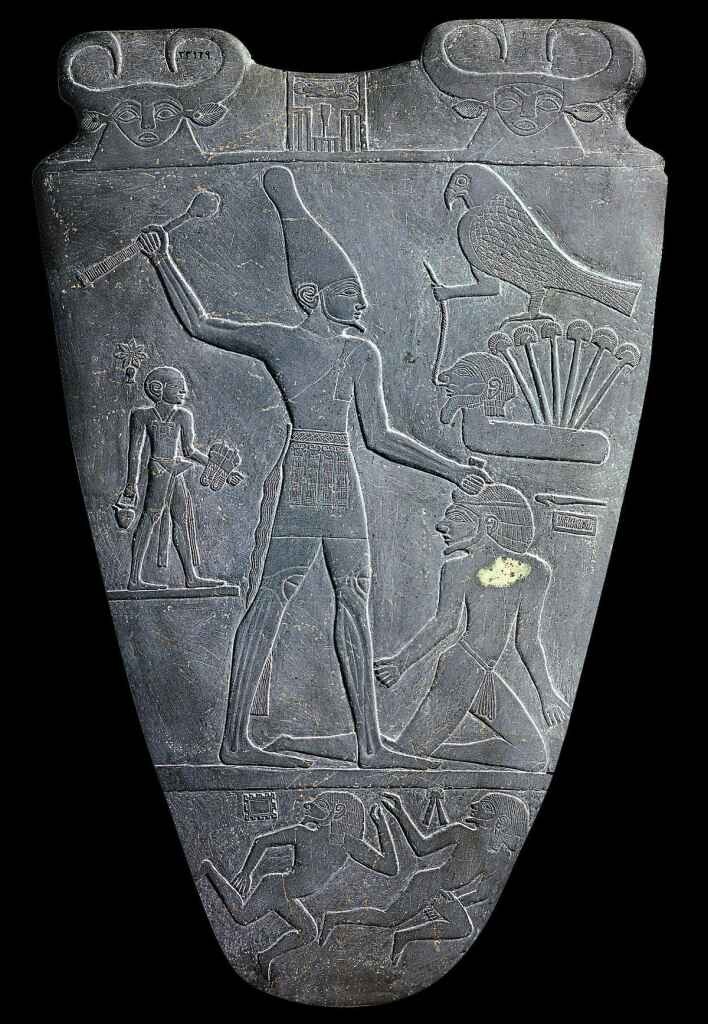
Egypt's first dynasty From:wikipedia
- Predynastic period:This period represents almost two thousand years of development in Egypt as there are very few written objects and records. I was fascinated to learn that Nefertiti, who played an important religious and political role in the reign of Akhenaten, was worshiped as a living goddess of fertility because of her beauty. From about 5000 to 3100 BC, the late Stone Age or Neolithic societies alternated hunting with agriculture and became a pioneer in the development of arts and crafts, religion, politics and technology. Around 3400 BC. there were two kingdoms called the Red Land and the White Land. In 3200 BC. the southern King Scorpion will conquer north of the Red Land. And after a century, King Menes wanted to defeat the north and unite the nation and become the first king of the first dynasty.
- Archaic (early dynastic) period:The capital was founded on the white wall, which became known as Memphis afterwards by King Menes. The capital was located in the north, on top of the Nile Delta, which was to be developed into a magnificent metropolis that would dominate society in Egypt during the period of the ancient kingdom. The growth of the foundations of Egyptian society was marked by the early dynastic or archaic period, which also involved the significant ideology of monarchy. The ancient Egyptians regarded the king as a god-like creature, closer to the almighty Horus. The hieroglyph, which was also a mystery in itself, is also dated back to this period. People in small villages depended on agriculture, mainly harvesting barley and wheat, which constructed the economic structure of Egyptian society.
- Old Kingdom:This was the period of the Pharaoh's third dynasty. The ancient kingdom marks the establishment of the largest stone building, recognized as the step pyramid at Saqqara, near Memphis. The pyramid was the result of a claim for a funeral monument by King Djoser to the priest, healer and architect Imhotep around 2630 BC. Egyptian pyramid, another riddle we find ourselves in that reaches the top by building the Great Pyramid of Giza. It was built on the outskirts of Cairo for Khufu who was king from 2589 BC. to 2566 BC. Herodotus, the great ancient Greek historian, had estimated that it would take twenty-ten thousand men to build the pyramid. The third and fourth dynasties saw prosperity and peace. The example of power, the pharaohs succeeded in forming a stable central government, and at the same time there were no foreign threats from nations like Libya and Nubia. But in the periods of the fifth and sixth dynasties, due to the ever-increasing influence of the priesthood and the nobility and the decline of Pharaoh's wealth, the King's absolute power faltered. Around the reign of King Pepy II of the sixth dynasty, this period ended in disarray.
-
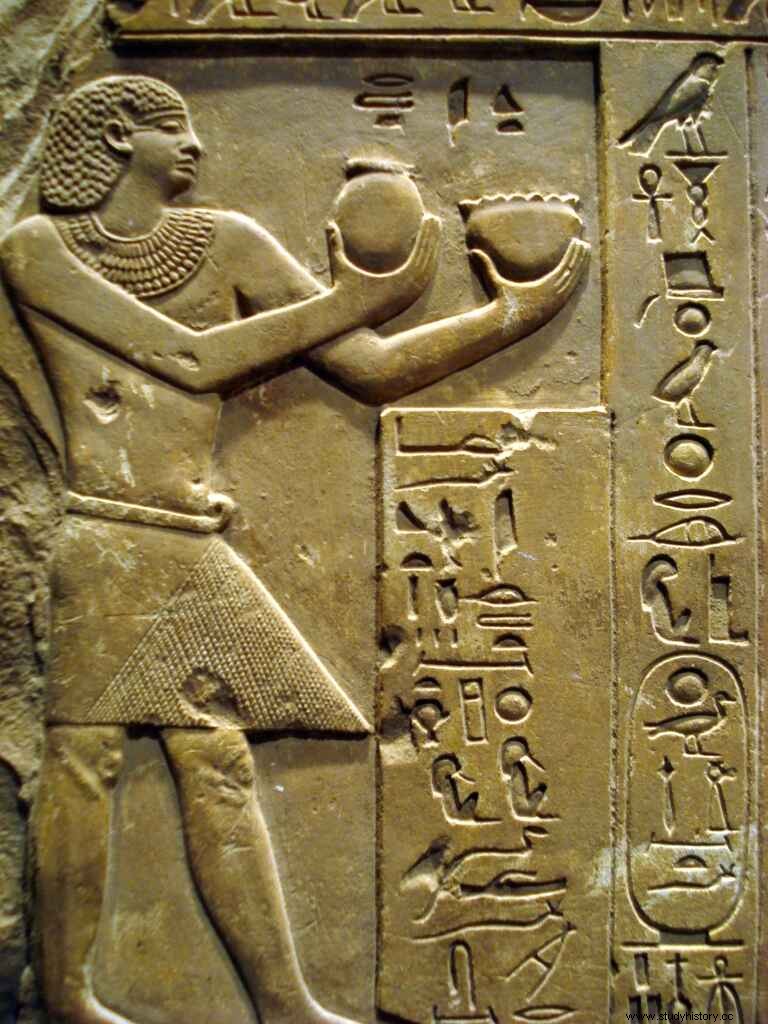
- Funeral of Intef II (11th Dynasty) Credit:Wikipedia
- First Intermediate Period:The Central Government completely collapsed around 2160 BC. following the rapid succession of Memphis-based seventh and eighth dynasties. The civil war in the provinces, the Bedouin invasion, along with disease and famine exacerbated the chaotic situation in ancient Egypt. About 2055 BC. defeated Mentuhotep Heracleopolis in the early eleventh dynasty and united Egypt, ending the first intervening period.
-

Lintel by Amenenhat I and Deities Credit:www.metmuseum.org
- Middle Kingdom (12th dynasty):During the twelfth dynasty, founded by Amen Unit I, Egypt flourished once again. The kings of the Middle Kingdom had ensured a smooth order of their line by making each descendant co-ruler since Amenemhet I. With an aggressive foreign policy, Egypt colonized Nubia with its precious resources and repelled the Bedouins who had plagued land since the first intervening period. The kingdom also formed trade and diplomatic relations with Palestine, Syria and other countries. The period peaked around 1842-1797 BC. during the reign of Amenemhet III and began to be emptied around 1798-1790 BC. under Amenemhet IV and his sister Queen Sobekneferu who was the first female ruler and the last of this period.
- Second Intermediate Period:From the fourteenth to the seventeenth dynasty, the epoch has been known as "the second intervening period." Egypt saw the full collapse of the central government in this period again, with part of the country controlled by Hyksos around 1650 BC. Hyksos was a group of Levant, a locality that includes Syria, Jordan, Lebanon, Palestine and Israel in our time. A cruel find from this period was several severed hands that were discovered at the palace of Avaris, a place in Hyksos-controlled Egypt. It was believed that the hands were paid by soldiers as a substitute for gold to a conqueror. Eventually the conflict between the Thebans and the Hyksoses flared up and the Thebans succeeded in driving them out of the country around 1570 BC, ending the "Second Intermediate Period".
-
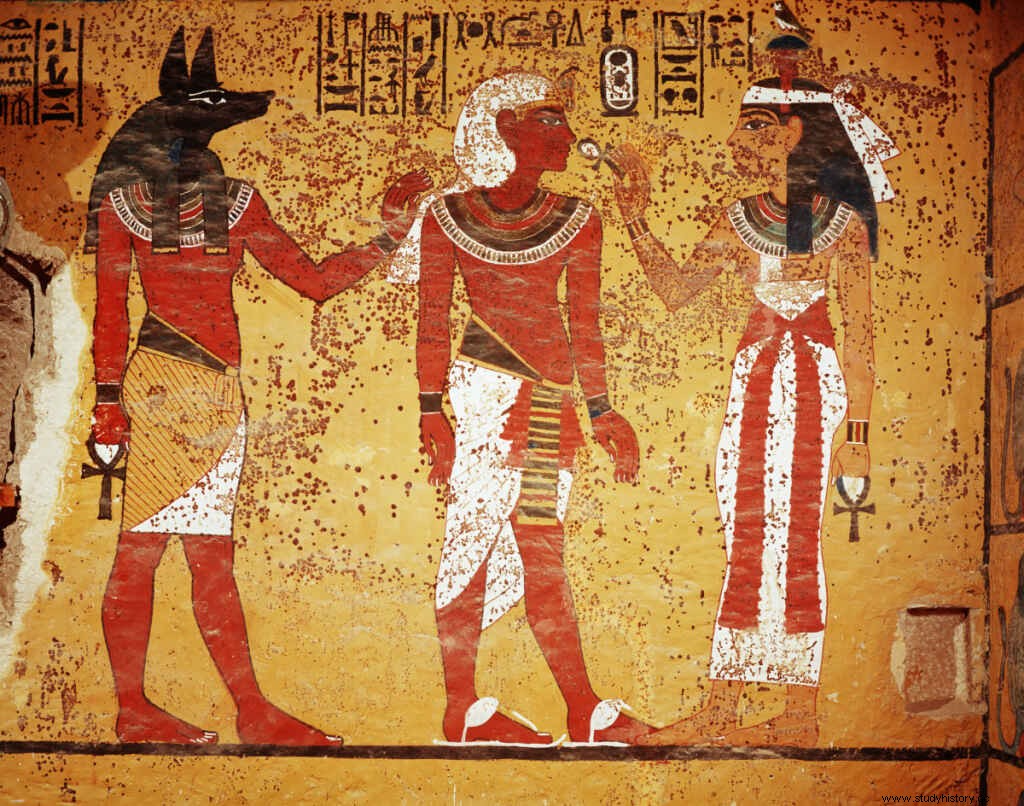
- Tutankhamun Credit:History.com
- New Kingdom:Egypt has reunited under Ahmose I, the first king of the eighteenth dynasty. From this dynasty to the twentieth, scholars have often referred to this period as the "new kingdom" which lasted from approx. 1550 to 1070 BC. The most popular archeological site from this time can be called the "Valley of the Kings", which holds the funerals of several rulers from this period. One of the most famous tombs would be Tutankhamun, whose tomb is still intact. The treasure found in the tomb of this era was a testament to the blessing Egypt was blessed with during this reign. The successors of the last great king, Ramses III, failed for a moment and the provinces were lost to Palestine and Syria and also suffered from foreign invasions and the wealth was steadily destroyed at the end of the period.
- Third Intermediate Period:The next four hundred years known as the "Third Intermediate Period" witnessed a spectacular transformation in Egyptian culture, politics and society. This period lasted from approx. 1070 to 713 BC. During this era, the country was not always united, and the central government was often weak. It was the period when civilizations and cities were destroyed by a group of people from the Aegean Sea, sometimes known as the "sea people" by modern scholars. Although the rulers of Egypt had claimed to defeat the "sea people", the central government also collapsed. The loss of trade revenues and routes was perhaps the cause of the weakened state.
- From late period to Alexander's conquest:Historians have often referred to the time between the twenty-fifth dynasty to the thirty-first dynasty, which lasted from approx. 712 to 332 BC, as "late period." Sometimes Egypt was ruled by foreign powers. During this late period, Nubia, the Persians and the Assyrians also became rulers of Egypt.
Alexander the Great had driven out the Persians from Egypt in 332 BC. while incorporating the country into the Macedonian Empire. After his death, a number of successors descended from Ptolemy Soter, a general of Alexander. Cleopatra VII was the last ruler in this succession who had committed suicide after her forces were defeated in 30 BC. by the Roman emperor Augustus in the "Battle of Actium." Egypt was included in the Roman Empire after her death.
While the Roman emperors were in Rome, the Egyptians still treated them as pharaohs. Recently, an excavated carving has shown the Roman emperor Claudius dressed as a pharaoh. The carving also had hieroglyphic inscriptions saying that Claudius is "the son of Ra, the lord of the crowns", and he is also "the king of upper and lower Egypt, lord of the two lands." Neither the Romans nor the Ptolemaic are concerned as one of the dynasties.
Egyptian mythology
Egypt displayed one of the largest and most intricate pantheons of gods of any human civilization in the ancient world. Throughout history, many gods and goddesses were worshiped in Egypt. I have recruited a few of the significant deities here in this post.
- Anubis:Anubis was associated with the care of the dead and funeral practices. In the ancient kingdom (C. 2575-2575 BC) before Osiris emerged as the god of the underworld, Anubis was considered the most important god of the underworld and death. With the head of a jackal and the body of a human, he was also represented as a jackal.
- Hathor:The goddess Hathor was usually depicted as a human with a cow's ears or head or just a cow. She is associated with fertility and motherhood. It was considered that she protected women during childbirth.
- Re:One of the many sun gods, Re was usually presented as a human with a skull. It was believed that he would sail on a boat in the sky during the day and enter the underworld at night to defeat the serpent god Apopis to rise again.
- Ptah:The head of the triad gods worshiped in Memphis, while the other two are his wife, the lion-headed goddess Sekhmet and probably the couple's son Nefertem. Ptah was associated with builders and craftsmen.
- Seth:Seth was the god of violence, deserts, chaos and storms. According to Osiris mythology, he killed his brother by tricking him. Due to its unusual animal head or animal body, scientists have come to the conclusion that there was no such animal, and the animal god was a kind of mythical composite.
- Horus:When Horus was described as a falcon or god with a falcon's head, he symbolized a heavenly god associated with hunting and war.
- Isis:Although her origins are unclear, over time she became one of the important gods in Egypt. When she resurrected Osiris and conceived Horus, she was conventionally the representation of mother and wife. She was also one of the last worshiped ancient goddesses and was recognized as Aphrodite in the ancient Greco-Roman period. It is often believed that the image of Isis with the infant Horus influenced the Christian image of Mary with the infant Jesus.
-
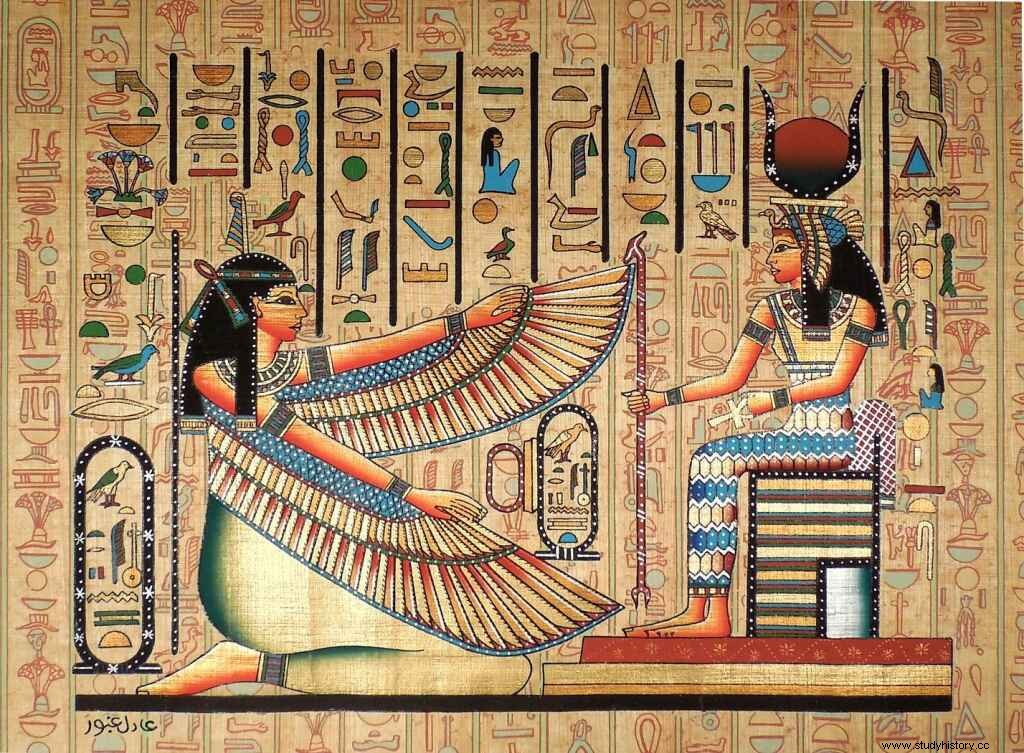
- Isis Goddess of Mother and Fertility Credit:Pinterest
- Osiris:The God of the Underworld also represented the resurrection, death, and annual flood of Nyle that Egyptian agriculture relied on. According to myth, his brother Seth killed and dismantled him while his wife Isis put him back together and resurrected. He was also symbolized as the mummified god, exposing his hands and face.
I found this incredible, blog where the influence of ancient mythology and gods and goddesses on world literature is beautifully portrayed. Whether it was a comparison between Dante's divine comedy and the Message of Forgiveness by the Arab poet Abul-Alaal-Maari when they both addressed the theme of the afterlife or the resemblance to Cinderella found in the papyrus of the fourth dynasty, the article is truly informative.
Places to visit in Egypt
Home to the intersection of ancient and modern culture, Egypt is a place of activity, adventure and tranquility. I only invite three places you must visit, but to know more visit here ..
-
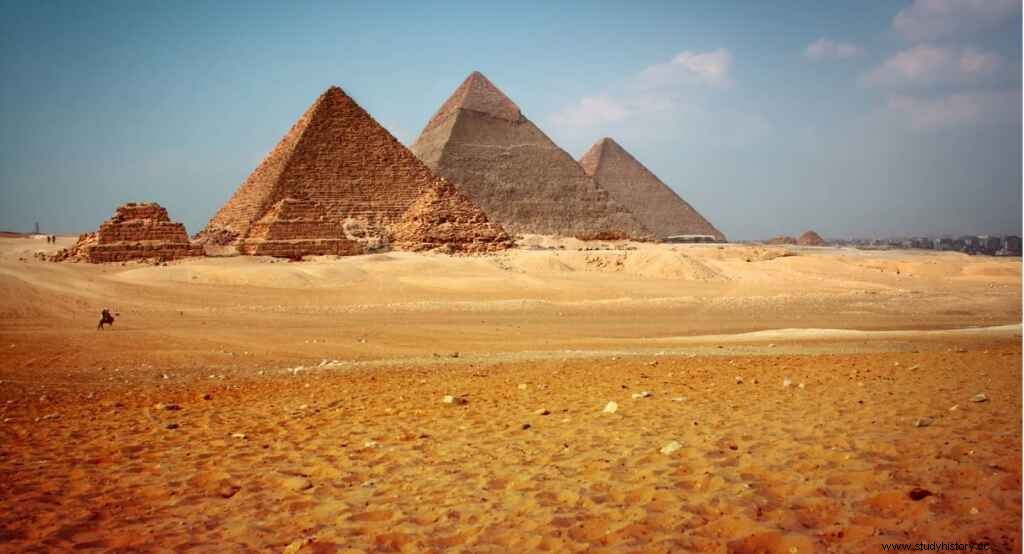
Information about the Giza Pyramids Credit:Egypt Tours Portal
- Pyramids of Giza
-
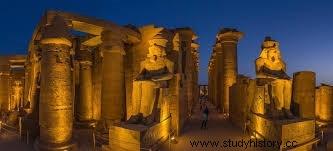
Karnak Temple and Valley of Death Credit:Leisure Travel Egypt
- Valley of the Kings and Luxor Karnak Temple
-

Panorama of the cityscape of Cairo taken during the sunset from the famous Cairo Tower, Cairo, Egypt
- Islamic Cairo
You're welcome! I just gave you a drop of sea. To drink in the history and culture of Egypt, you will have to wait for more future posts. Until then, settle for this one!

